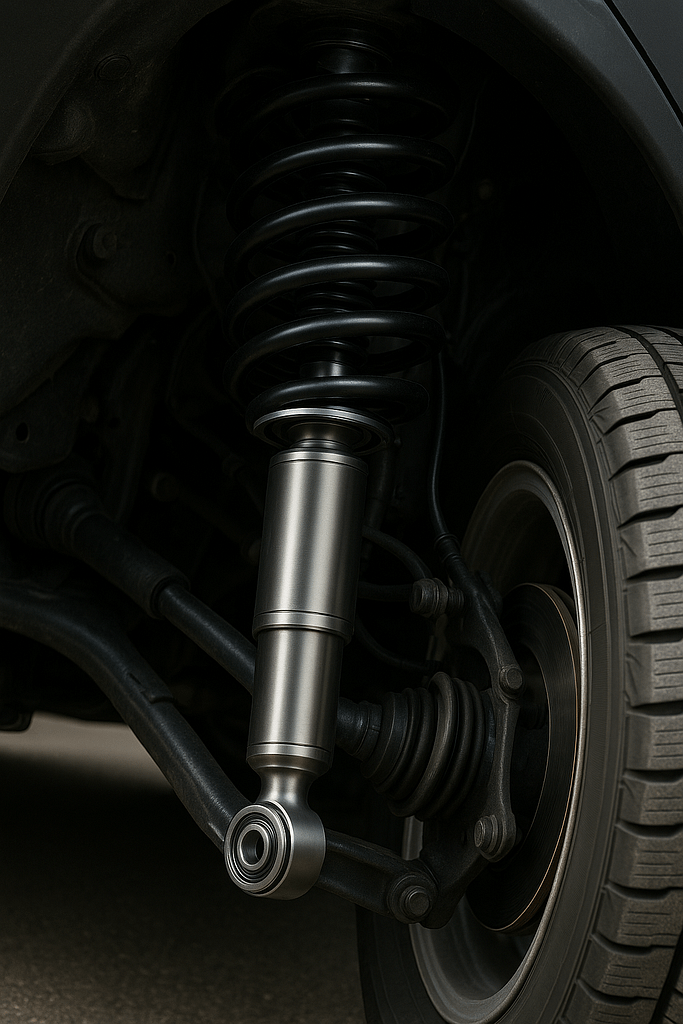As an automotive professional with years of experience in suspension systems, I’ve witnessed firsthand how quality shock absorbers can dramatically impact both fuel economy and vehicle safety. Many drivers underestimate these critical components, viewing them merely as comfort enhancers. However, the relationship between shock absorber quality and overall vehicle performance runs much deeper than most realize. In this comprehensive guide, I’ll explain the science behind how premium shock absorbers contribute to better fuel efficiency and enhanced safety.
Understanding the Role of Shock Absorbers
Primary Functions
Shock absorbers serve multiple crucial purposes:
- Control spring oscillation to maintain tire contact with the road
- Dampen vertical motion caused by road irregularities
- Stabilize vehicle body during acceleration, braking, and cornering
- Maintain optimal suspension geometry for predictable handling
The Science Behind Shock Absorption
Quality shock absorbers work by converting kinetic energy into thermal energy through hydraulic fluid resistance. This process:
- Minimizes unnecessary vehicle movement
- Reduces energy loss through excessive motion
- Maintains consistent tire-to-road contact
How Quality Shock Absorbers Improve Fuel Economy
Reduced Rolling Resistance
When shock absorbers function optimally:
- Tires maintain proper contact with the road surface
- Reduced tire bounce minimizes energy waste
- Consistent alignment prevents unnecessary friction
Aerodynamic Stability
Quality shock absorbers contribute to fuel efficiency by:
- Maintaining optimal ride height for better aerodynamics
- Reducing body roll and pitch during acceleration
- Minimizing air turbulence under the vehicle
Energy Conservation
Premium shock absorbers help conserve energy through:
- Efficient damping that prevents excessive suspension movement
- Reduced drivetrain stress from better stability
- Lower parasitic losses in the overall system
Real-World Fuel Savings
Studies show that worn shock absorbers can increase fuel consumption by:
- Up to 5% in highway driving conditions
- 8-10% in stop-and-go urban traffic
- 15% or more on rough road surfaces
Safety Benefits of Quality Shock Absorbers
Enhanced Braking Performance
Quality shock absorbers significantly improve braking by:
- Maintaining tire contact during hard braking
- Reducing nose dive for better weight distribution
- Shortening stopping distances by up to 20%
Improved Vehicle Control
Premium shock absorbers enhance safety through:
- Better steering response and precision
- Reduced body roll in emergency maneuvers
- Enhanced stability at highway speeds
Tire Wear and Traction
Well-functioning shock absorbers ensure:
- Even tire wear patterns for consistent grip
- Optimal traction in wet or slippery conditions
- Reduced risk of hydroplaning
Electronic Safety System Integration
Modern vehicles rely on shock absorbers for:
- ABS effectiveness through consistent wheel contact
- Stability control system performance
- Traction control system optimization
Signs of Worn Shock Absorbers
Visual Indicators
- Oil leakage on shock absorber body
- Damaged dust boots or mounting hardware
- Uneven tire wear patterns
Performance Symptoms
- Excessive bouncing after hitting bumps
- Nose diving during braking
- Body roll in corners
- Vibrations through the steering wheel
Safety Warning Signs
- Increased stopping distances
- Poor handling in emergency situations
- Reduced stability at highway speeds
Choosing Quality Shock Absorbers
Key Features to Consider
- Construction quality: Look for monotube or quality twin-tube designs
- Valving technology: Advanced valving provides better control
- Materials: Corrosion-resistant components ensure longevity
- Brand reputation: Choose established manufacturers with proven track records
Cost vs. Value Analysis
While quality shock absorbers require higher initial investment:
- Fuel savings offset costs over time
- Extended tire life reduces replacement frequency
- Enhanced safety provides invaluable peace of mind
- Better resale value for your vehicle
Maintenance Best Practices
Regular Inspection
- Check shock absorbers every 12,000 miles
- Look for signs of wear or damage
- Test performance with the bounce test
Professional Assessment
- Have suspension checked during routine service
- Use diagnostic equipment for accurate evaluation
- Replace in pairs or complete sets for balanced performance
Conclusion
Investing in quality shock absorbers is more than just improving ride comfort—it’s a strategic decision that enhances fuel economy and safety. By maintaining optimal tire contact, reducing energy waste, and ensuring predictable vehicle behavior, premium shock absorbers deliver tangible benefits that extend far beyond their initial cost. Whether you’re looking to reduce fuel expenses or prioritize family safety, upgrading to quality shock absorbers represents one of the most impactful improvements you can make to your vehicle.
Remember, shock absorbers are critical safety components that directly influence your vehicle’s ability to stop, steer, and maintain stability. Don’t wait for complete failure before replacing them—proactive maintenance ensures you’ll continue enjoying optimal fuel efficiency and maximum safety on every journey.



